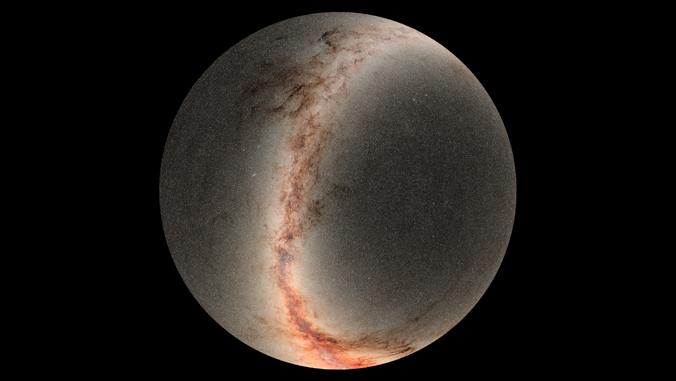Haleakalā Telescope Completes World’s Largest Digital Sky Survey
The University of Hawaiʻi at Mānoa Institute for Astronomy, in conjunction with the Space Telescope Science Institute in Baltimore, Maryland, is releasing the second edition of data from Pan-STARRS. The Panoramic Survey Telescope and Rapid Response System is the world’s largest digital sky survey.
This second release contains more than 1.6 petabytes of data, making it the largest volume of astronomical information ever released–that’s 15 times the volume of the Library of Congress.
The Pan-STARRS observatory consists of a 1.8-meter telescope equipped with a 1.4 billion pixel digital camera, located at the summit of Haleakalā on Maui.
“Pan-STARRS DR2 represents a vast quantity of astronomical data, with many great discoveries already unveiled,” said Heather Flewelling, IfA researcher and a key designer of the PS1 database. “These discoveries just barely scratch the surface of what is possible, however, and the astronomy community will now be able to dig deep, mine the data and find the astronomical treasures within that we have not even begun to imagine.”
Pan-STARRS was the first survey to observe the entire sky visible from Hawaiʻi multiple times in many colors of light. One of the survey’s goals was to identify moving, transient, and variable objects, including asteroids that could potentially threaten the Earth. The survey took approximately four years to complete.

This image is a mosaic of sky photographs taken by the Pan-STARRS Observatory, a 1.8-meter telescope located at the summit of Haleakalā, on Maui. The center of the circle is the north celestial pole, and the outer edge is a sky declination of -30 degrees — the southern horizon as seen in Hawaiʻi). The bright band extending from top to bottom is our Milky Way galaxy. The center of the galaxy is near the bottom edge of the image where the galaxy is brightest. In total, Pan-STARRS catalogued more than 800 million objects within this image. The image includes both stars and galaxies, although most of what is visible are objects in the Milky Way. In the plane of the Milky Way, dark filaments and clouds show cosmic dust, which absorbs blue light and makes the objects appear much redder. The Pan-STARRS data have been used to produce the best map of our galaxy’s dust by analyzing the colors and brightnesses of these stars. Credit: R. White (STScI) and the PS1 Science Consortium, Brooks Bays (UH)










